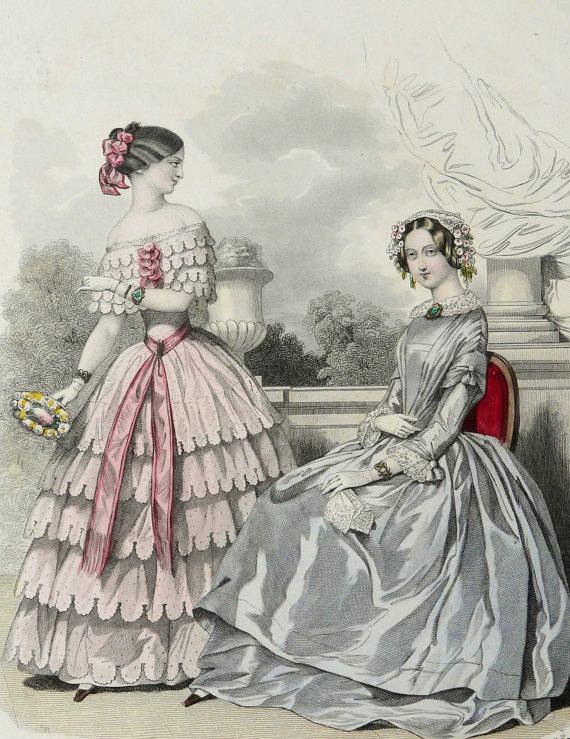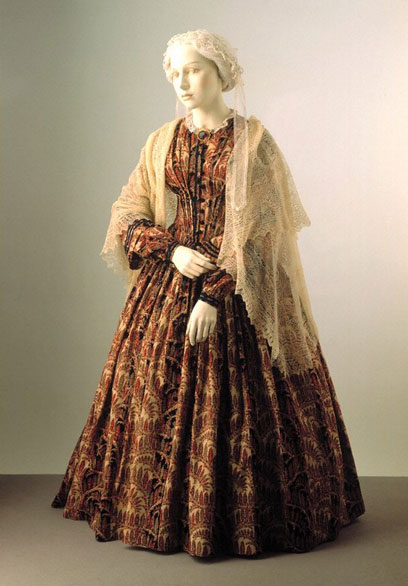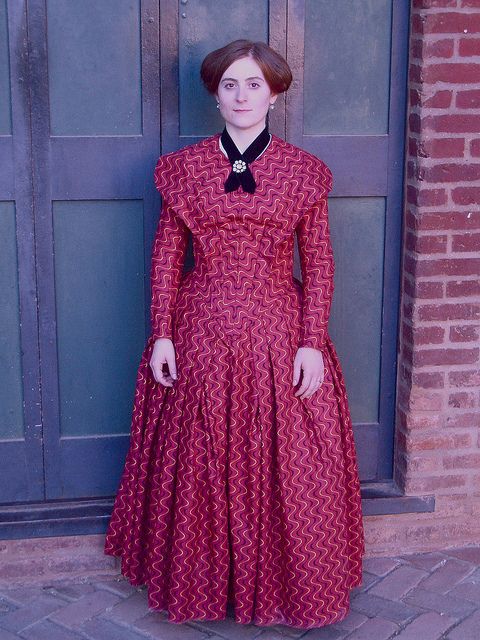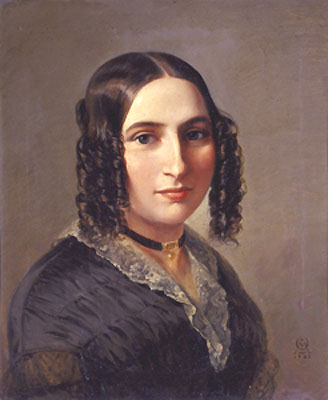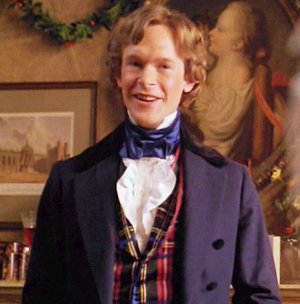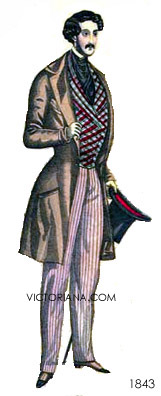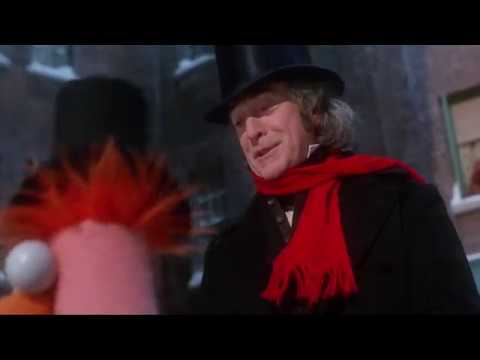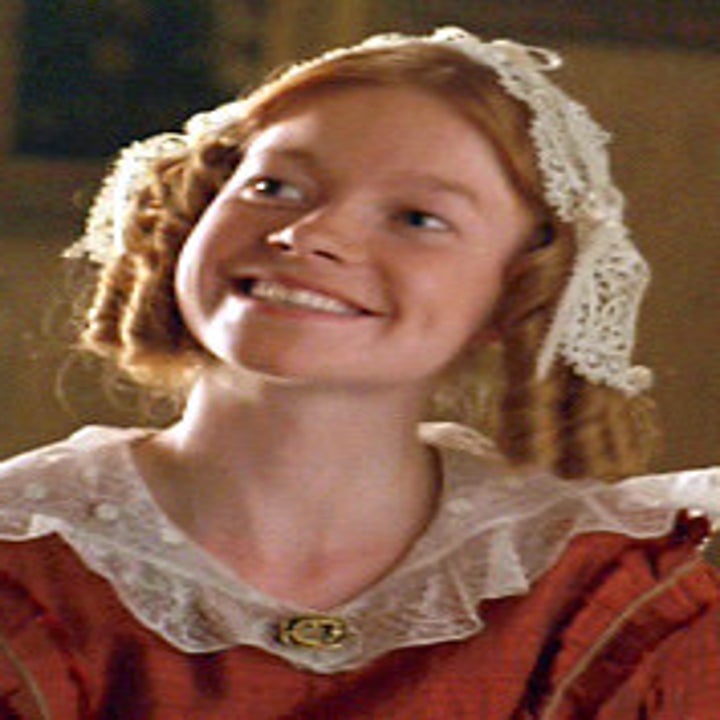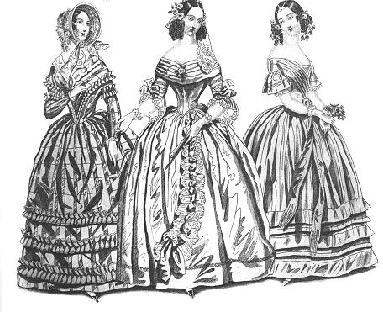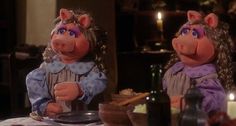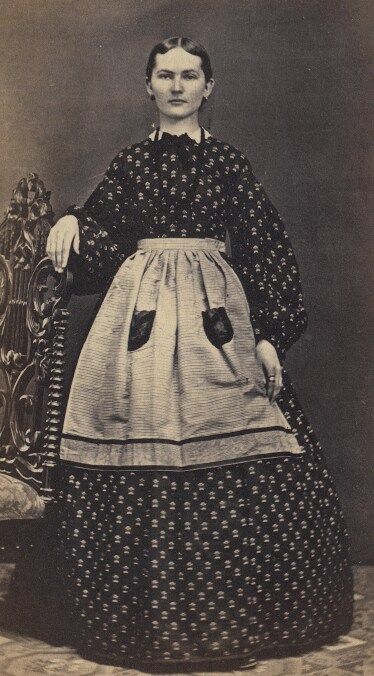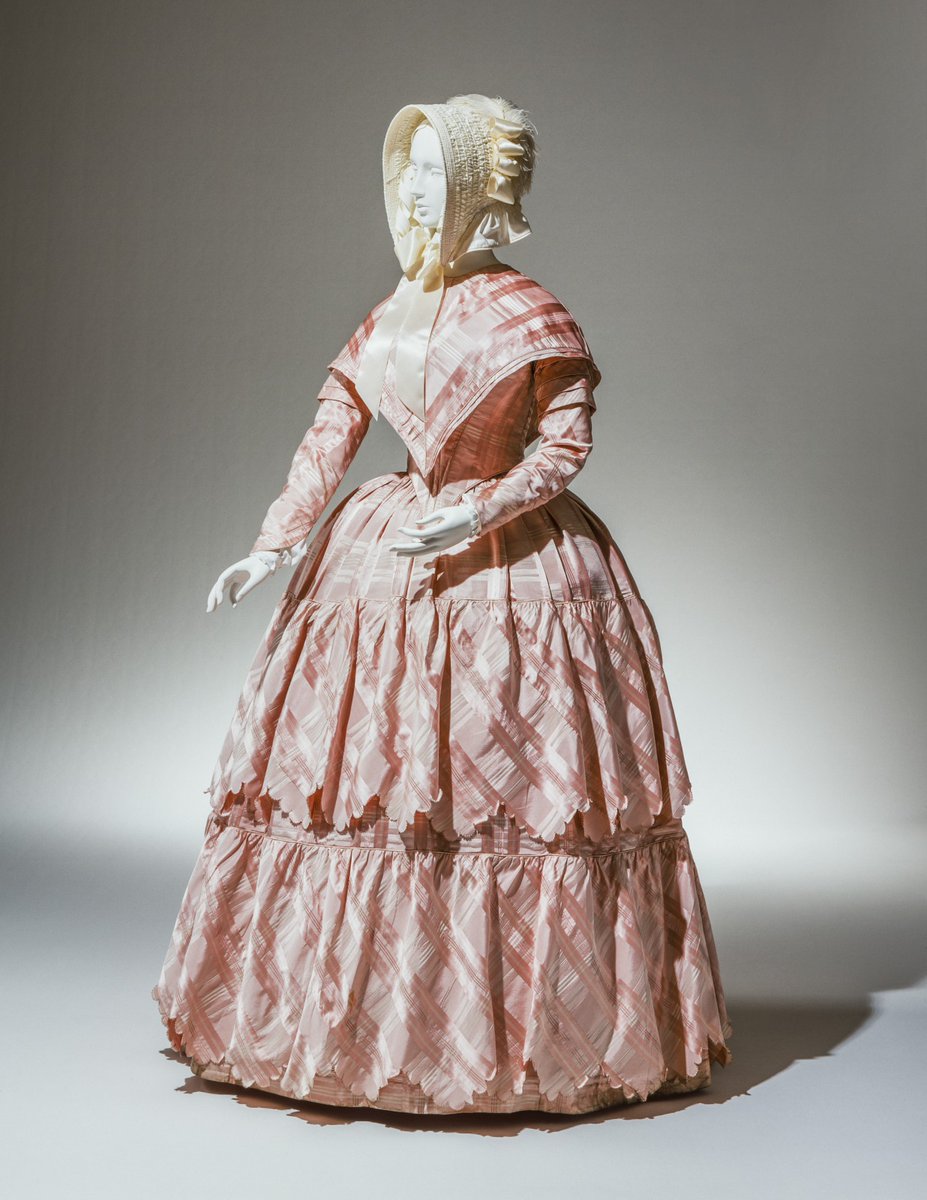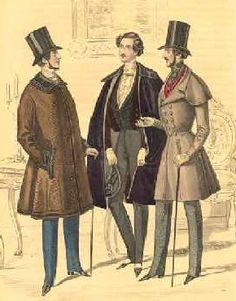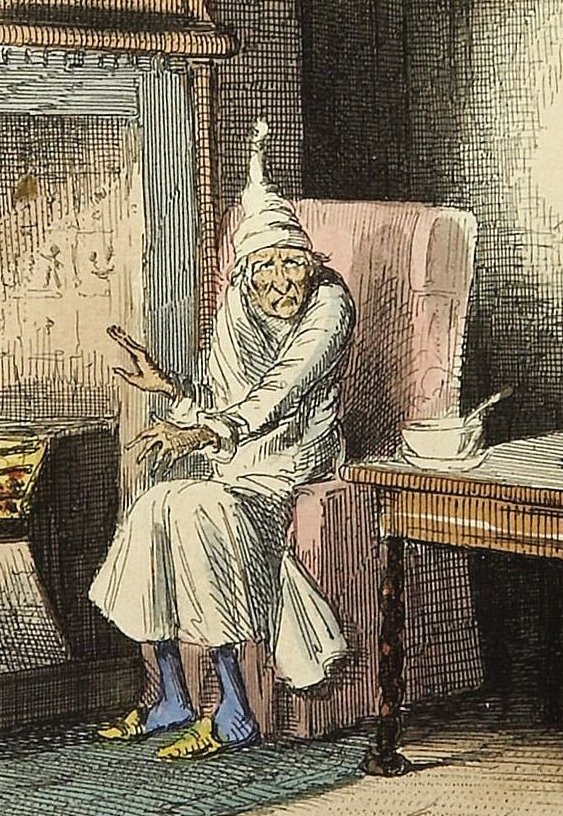Okay, since apparently I& #39;ve become the prominent Muppet fashion expert, I want to talk more about the beautifully period-accurate fashions in A Muppet Christmas Carol.
With illustrations!
(Thread)
With illustrations!
(Thread)
First, an assumption: "present day" in A Christmas Carol is ~1843, since that& #39;s when it was published, and Dickens wrote mostly about his own time. The "present day" fashions seem consistent with that.
So let& #39;s talk about those fashions first.
So let& #39;s talk about those fashions first.
Women& #39;s dress. Clara& #39;s gown in this clip is typical of upper middle-class dress of the period. Note the "fan" bodice, narrow sleeves, white cap (which would be worn under a bonnet outdoors), and the lace collar with a rosette.
https://getyarn.io/yarn-clip/c81e4825-173c-4a81-890b-43d1bd7b7e6b">https://getyarn.io/yarn-clip...
https://getyarn.io/yarn-clip/c81e4825-173c-4a81-890b-43d1bd7b7e6b">https://getyarn.io/yarn-clip...
In the 1840s, the crinoline (hoop skirt) was not yet in use. Fullness in the skirts was created by MULTIPLE petticoats.
But there& #39;s a limit to how much fullness you can achieve with that. You can see that in both Clara and Emily Cratchit& #39;s dresses.
But there& #39;s a limit to how much fullness you can achieve with that. You can see that in both Clara and Emily Cratchit& #39;s dresses.
Compare this production still of Emily Cratchit to this dress from the collection of the V&A (designer unknown).
Also, I& #39;ve made a couple of dresses using Truly Victorian& #39;s 1845 German Day Dress pattern, which is also very typical of the time.
https://trulyvictorian.info/index.php/product/tv454-1845-german-day-dresses/
(I">https://trulyvictorian.info/index.php... found this image on Pinterest, credited to a site called "thesewingacademy dot org" that no longer seems to be extant).
https://trulyvictorian.info/index.php/product/tv454-1845-german-day-dresses/
(I">https://trulyvictorian.info/index.php... found this image on Pinterest, credited to a site called "thesewingacademy dot org" that no longer seems to be extant).
Women& #39;s hair styles in this movie are also consistent with the 1840s -- close to the head, and always center parted. Compare Miss Piggy/Emily Cratchit& #39;s "spaniel curls" to the ones in this 1842 portrait of Fanny Hensel by Moritz Daniel Oppenheim.
As for the men? Well, I& #39;ve talked before about my love of Cousin Fred& #39;s dress -- colorful, with sometimes-clashing plaids.
Contrary to the opinions of certain Twitter commentators, men wore colors and patterns in this period. Maybe not to the extent women did, but it was still part of their palette, especially for waistcoats, braces, and cravats.
See: this 1843 men& #39;s fashion plate.
See: this 1843 men& #39;s fashion plate.
Yes, colors got more somber across the 19th century, but didn& #39;t hit its peak until the 1890s. Even into the 1880s, you see incredibly baroque (not Baroque) fashions on men. (See my article on fashion in Crimson Peak!) http://www.lisefrac.net/log/crimson-peak-fashion-and-fantasy/">https://www.lisefrac.net/log/crims...
"But Scrooge dresses all in black!" Yes, and he& #39;s an elderly miser. He doesn& #39;t give a shit about being in fashion. To paraphrase the book and movie, "Black is cheap, and Scrooge liked it fine."
(Notice how that when he reforms, he gains a red scarf!)
(Notice how that when he reforms, he gains a red scarf!)
(More than any one fashion icon, the increasing somberness of men& #39;s dress has to do with the creation of the nuclear family and the father as master of that -- which arguably is the birth of modern toxic masculinity).
But I digress.
But I digress.
Another point: the Victorian era marked the birth of the middle class. Class consciousness was very high, and as a result, the middle class really wanted to show off their increasing wealth -- often via their clothing!
Plaids, patterns, colors, ruffles, frills -- anything goes. Especially for evening dress. (Day dress was more somber).
As the upper class had to keep up, it became a class war of escalation through fashion.
As the upper class had to keep up, it became a class war of escalation through fashion.
Also, modern ideas of coordinating colors and not wearing clashing prints... didn& #39;t so much exist. The guiding design principle was "SWAG ALL THE THINGS."
Speaking of ruffles, in this closeup of Clara, note the ruffles ornamenting the seams of her bodice. It& #39;s very similar to the leftmost figure in this 1841 fashion plate.
Also, increased trade with India was beginning to make printed cottons affordable even to the lower classes. (Previously they would need to be woven on the newfangled jacquard loom, which was time-consuming and therefore expensive work).
So even the Cratchit daughters, from a poor family, get these lovely calico prints -- as does this working class woman from, I think, the 1830s?
The ensemble musical numbers in Muppet Christmas Carol also show us many features of outerwear of the time period -- coal scuttle bonnets, pardessus, pelerines, shawls, scarfs, etc.
(Those bonnets are where the Muppet milliners came in, one assumes). ">https://youtu.be/NzcUQuImI...
(Those bonnets are where the Muppet milliners came in, one assumes). ">https://youtu.be/NzcUQuImI...
Compare to this woman& #39;s outerwear ensemble, from the Cincinnati Art Museum& #39;s collection. Dating to 1843-1845, it shows the pelerine, a cape of lace or silk that coordinated with the skirts and followed the lines of the bodice.
As for men, here& #39;s a fashion plate that I& #39;m not quite sure how to date, but seems to be from the 1840s. Tall hats, capes, loose mantles of wool, skirted overcoats, & walking sticks.
(Unclear to me if frock coats were also worn as outerwear. Maybe in mild weather)
(Unclear to me if frock coats were also worn as outerwear. Maybe in mild weather)
Which of course makes me think of Mr. Charles Dickens, né Gonzo, himself:
As well as these charming gentle-swine.
Oh, and one more thing -- about Scrooge& #39;s nightcap. Very typical indoor/night wear for men in this time. It& #39;s a leftover from an earlier period, when men wore periwigs, and would "relax" at home by taking off their wigs and wearing a nightcap over their hair.
It also helps to keep hair clean in a time when people probably didn& #39;t wash their hair super-often.
Here& #39;s Scrooge in a nightcap from the artwork that accompanied an early edition of A Christmas Carol!
Here& #39;s Scrooge in a nightcap from the artwork that accompanied an early edition of A Christmas Carol!
(It also kept the back of the neck warm in houses that were often drafty. Like Scrooge& #39;s! A nice bit of characterization there).
Okay, that& #39;s all I have to say about Muppet fashions... for now.
Next time (?) I& #39;ll dive into the evolution of fashion from 18th-19th century, as seen in the Ghost of Christmas Past sequences.
Next time (?) I& #39;ll dive into the evolution of fashion from 18th-19th century, as seen in the Ghost of Christmas Past sequences.
Oh, I also want to note: the credit for this amazing costume design goes to Ann Hollowood and Polly Smith.
The first is probably best known for doing costume design on the Merlin TV series, and the latter for the costume design on Labyrinth and The Dark Crystal.
The first is probably best known for doing costume design on the Merlin TV series, and the latter for the costume design on Labyrinth and The Dark Crystal.

 Read on Twitter
Read on Twitter